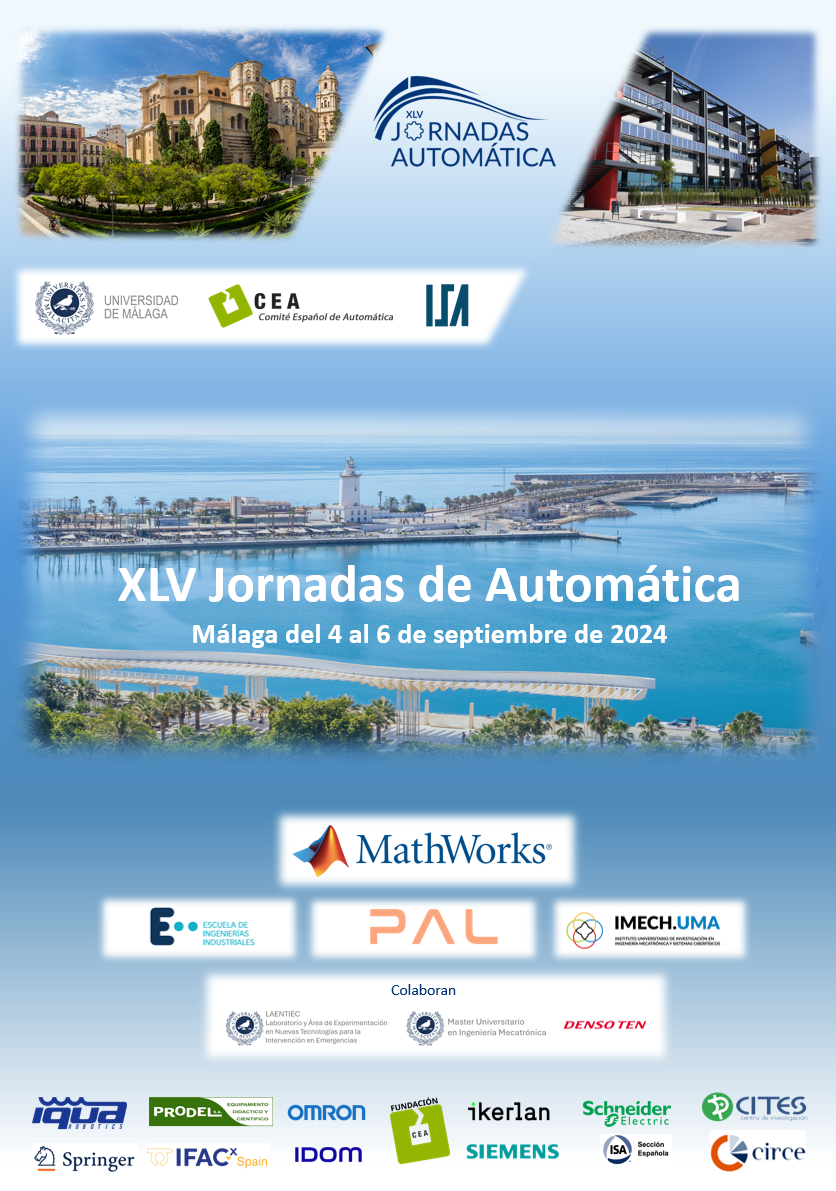Capturing Thermal Dynamics in Air-Conditioned Rooms
A Data-Driven Approach
DOI:
https://doi.org/10.17979/ja-cea.2024.45.10818Palabras clave:
filtering and smoothing, identifiability, identification for control, software for system identification, model validationResumen
Thermostatically controlled loads (TCLs) play a crucial role in reducing energy consumption in buildings. Thus, developing accurate models that enable the effective implementation of energy control strategies is essential. With this goal in mind, a model of a room influenced by an air conditioning (AC) unit was developed as an initial starting point for our research into TCL systems modeling and control. In this work, a data-driven modeling approach was utilized, employing data collected from an ad-hoc data collection platform. In addition, an algorithm was developed to determine the AC’s operational states. The results, based on RMSE (Root Mean Square Error) and MAXAE (Maximum Absolute Error) metrics, demonstrate the effectiveness of the proposed algorithm and data-driven modeling approach in capturing the thermal dynamics of the room under the influence of the AC unit.
Referencias
Afram, A., Janabi-Sharifi, F., 2015. Black-box modeling of residential HVAC system and comparison of gray-box and black-box modeling methods. Energy Build. 94, 121–149. https://doi.org/10.1016/j.enbuild.2015.02.045
Air conditioning unit Hisense APC12QC, 2024. URL https://www.hisense.es/aire-acondicionado-domestico/portatil/aireacondicionado-portatil-apc12qc/ (accessed 5.14.24).
arx, 2024. URL https://es.mathworks.com/help/ident/ref/arx.html (accessed 5.27.24).
Beghi, A., Cecchinato, L., Paggiaro, F., Rampazzo, M., 2011. VAVAC systems modeling and simulation for FDD applications. Presented at the 2011 9th IEEE International Conference on Control and Automation (ICCA), IEEE, Santiago, Chile, pp. 800–805. https://doi.org/10.1109/ICCA.2011.6138039
Berouine, A., Akssas, E., Naitmalek, Y., Lachhab, F., Bakhouya, M., Ouladsine, R., Essaaidi, M., 2019. A Fuzzy Logic-Based Approach for HVAC Systems Control. Presented at the 2019 6th International Conference on Control, Decision and Information Technologies (CoDIT), IEEE, Paris, France, pp. 1510–1515. https://doi.org/10.1109/CoDIT.2019.8820356
Berouine, A., Ouladsine, R., Bakhouya, M., Essaaidi, M., 2022. A predictive control approach for thermal energy management in buildings. Energy Rep. 8, 9127–9141. https://doi.org/10.1016/j.egyr.2022.07.037
Braun, J.E., Kyoung-Ho Lee, 2006. An Experimental Evaluation of Demand Limiting Using Building Thermal Mass in a Small Commercial Building. ASHRAE Trans. 112, 559–571.
Canbay, Ç.S., 2003. Optimization of Hvac Control Strategies by Building Management Systems Case Study: Özdilek Shopping Center (M.Sc.). Ann Arbor, United States.
ESP32, 2024. URL https://www.espressif.com/en/products/socs/esp32 (accessed 5.27.24).
Gomez-Ruiz, G., Sanchez-Herrera, R., Andujar, J.M., Rubio Sanchez, J.L., 2024. Simulation-Based Education Tool for Understanding Thermostatically Controlled Loads. Sustainability 16, 999. https://doi.org/10.3390/su16030999
Guo, W., Nutter, D.W., 2010. Setback and setup temperature analysis for a classic double-corridor classroom building. Energy Build. 42, 189–197. https://doi.org/10.1016/j.enbuild.2009.08.014
International Energy Agency [WWW Document], 2023. URL https://www.iea.org/energy-system/buildings/space-cooling (accessed 5.17.24).
Li, S., Ren, S., Wang, X., 2013. HVAC room temperature prediction control based on neural network model. Presented at the 5th International Conference on Measuring Technology and Mechatronics Automation (ICMTMA), IEEE, New York, pp. 606–609. https://doi.org/10.1109/ICMTMA.2013.151
Liu, M., Tian, Y., Cheng, D., Zhang, Y., Ding, L., 2022. Modelling and control of central air-conditioning loads for power system emergency frequency control. IET Gener. Transm. Distrib. 16, 4054–4067. https://doi.org/10.1049/gtd2.12571
MCP9808, 2024. URL https://www.microchip.com/en-us/product/mcp9808 (accessed 5.24.24).
Moroşan, P.-D., Bourdais, R., Dumur, D., Buisson, J., 2010. Building temperature regulation using a distributed model predictive control. Energy Build. 42, 1445–1452. https://doi.org/10.1016/j.enbuild.2010.03.014
n4sid, 2024. URL https://es.mathworks.com/help/ident/ref/n4sid.html#mw_a7743737-84cd-49b8-bf91-971f4c0246f8 (accessed 5.27.24).
SONOFF RFR2, 2024. URL https://sonoff.tech/product/diy-smartswitches/rfr2/ (accessed 5.24.24).
Soyguder, S., Karakose, M., Alli, H., 2009. Design and simulation of selftuning PID-type fuzzy adaptive control for an expert HVAC system. Expert Syst. Appl. 36, 4566–4573. https://doi.org/10.1016/j.eswa.2008.05.031
Turner, W.J.N., Walker, I.S., Roux, J., 2015. Peak load reductions: Electric load shifting with mechanical pre-cooling of residential buildings with low thermal mass. Energy 82, 1057–1067. https://doi.org/10.1016/j.energy.2015.02.011
Descargas
Publicado
Número
Sección
Licencia
Derechos de autor 2024 Gabriel Gómez-Ruiz, Adolfo J. Sánchez, Reyes Sánchez-Herrera, José M. Andújar

Esta obra está bajo una licencia internacional Creative Commons Atribución-NoComercial-CompartirIgual 4.0.





